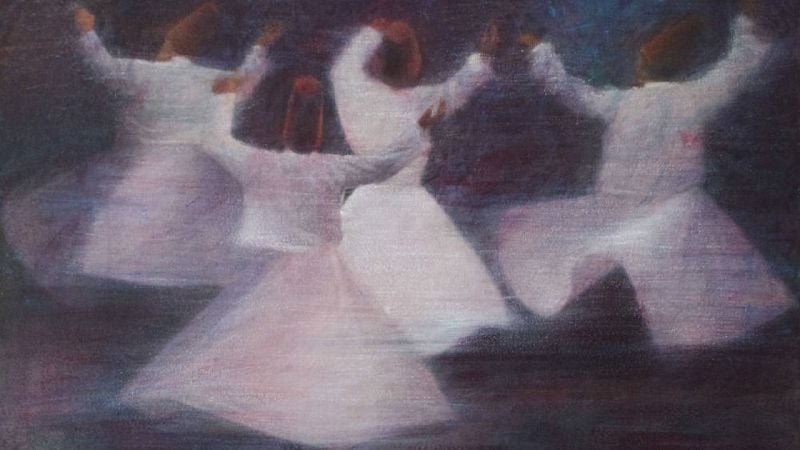
A painting by Badie Jahjah, Photo DR
"The human being is a dervish, however great he may be,” says Badie Jahjah. “All the tests he experiences are lessons through which he faces his destiny.”
Badie Jahjah is a Syrian multi-disciplinary artist and graphic designer. Some years ago, during the Syrian civil war, he experienced divorce, which led him to revisit the symbol of the dervish.
He began sketching the free lines of movement, documenting the rhythmic meditation, an expression of prayer within the Sufi mystic tradition.
Within this Islamic tradition, dervishes also take a vow of material poverty. In Arabic, someone described as “darwish” — or a dervish — is often perceived as humble.
What began as a personal exploration of an artistic symbol gave way to a deeply spiritual expansion of artistic practice. In capturing the essence of the dervish, Jahjah expanded his research into the works of famous poets Rumi, Tabriz, al-Hallaj, Ibn Arabi, Ibn Rushd, Rabia al-Adawiyya and others.
From his Damascus gallery, Alefnooon, Jahjah is financing a competition for budding Syrian artists and youth, in cooperation with the Ministry of Education. He is also in the process of archiving 20th-century Syrian art, along with Syrian art critic Saad al-Kassem.
His next large-scale project will be in Dubai’s al-Fahidi district, collaborating with Italian artist Aurela Cuku. The installation connects the relationship between dervishes and trees, and Jahjah hopes the multifunctional space will be accessible to all, especially children.
The dervish is now a constant in Jahjah’s life. He wrote a book titled “Dervish of Habak (basil)”, retracing his journey. To Jahjah, the word basil encompasses the love of his mother and grandmother, who would frequently use basil in their cooking. The word Habak in Arabic symbolizes two things for Jahjah: Hobb which is love, and Haqq which is justice.
Jahjah transcends an often constant outside narrative of conflict and corruption by focusing on the invisible. “Love always has its supporters. Inner peace is between you and yourself,” he says.
This article is an adaptation by Jaimee Haddad of Nicole Hamouche’s profile of Jahjah, published in our sister publication L’Orient- Le Jour.
